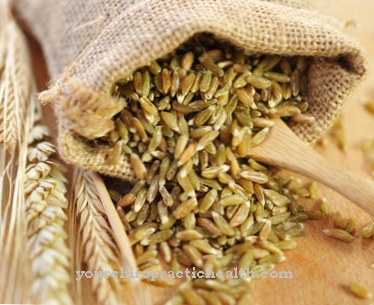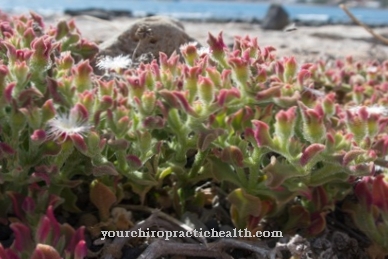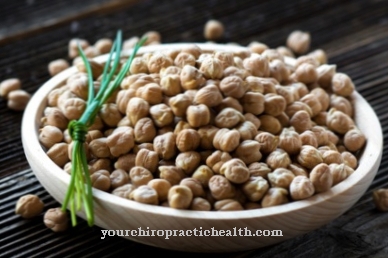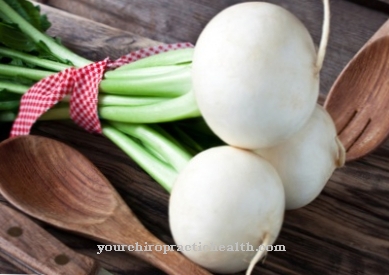okra is a shrub from the mallow family with elongated green capsule fruits that resemble pods. The plant originally comes from East Africa, but is now also widespread in southern Europe, Asia and the American continent. Although okra is one of the oldest vegetables in the world and has many health benefits, the vegetable is largely unknown in Central and Northern Europe.
What you should know about okra

The okra bush is also known as the vegetable marshmallow. It originally comes from the area of today's Ethiopia, but spread in prehistoric times in large parts of Africa and the Middle East. The oldest evidence for the cultivation of okra comes from the time of ancient Egypt. Okra is one of the oldest vegetables known to man.
The plant thrives particularly in subtropical and Mediterranean areas and is now grown worldwide in all corresponding regions. Okra is particularly popular and widespread in West Africa, the Arab countries, India, Pakistan and the Philippines, but also in Greece, Japan and the USA. That is why there are numerous regional specialties that are based on or contain okra. Best known is the gumbo, a hearty stew that is typical of the cuisine of the American southern states. Okra is a bushy shrub that can grow up to 2.5 m high. It has showy yellowish-white flowers and bears elongated green capsule fruits that have five chambers, are pentagonal in cross-section and can be up to 20 cm long.
In newer cultivated forms, the fruits can also be reddish. The leaves of the plant are also edible, but usually only the okra fruits are used. Since the fibrous fruits turn woody very quickly, the harvest usually takes place shortly before the actual ripeness. Although they are not pods in the botanical sense, the okra fruits are often called that. The abbreviation okra is also common for the vegetables. Okra has a taste similar to green beans with its very own bittersweet note. It is particularly typical of okra that when it is cooked it gives off a slimy substance that thickens the respective dish.
This property is not only used in traditional one-pot dishes, but is also used deliberately for thickening dried okra products. Brief blanching or the addition of vinegar or other acidic components can reduce or even completely prevent the formation of mucilage. Therefore, okra can be prepared not only in stews, but also as a normal vegetable. Okra is also very digestible when pickled, raw or in salads. A greenish edible oil is also made from the seeds of okra, and when roasted they serve as a traditional coffee substitute.
Importance to health
Okra is an ideal vegetable for all weight loss diets. Not only is it significantly lower in calories than other vegetables, it is also extremely filling thanks to its high fiber content. The dietary fiber contained in okra stimulates the intestinal activity and has a balancing effect on both diarrhea and constipation.
The increased stool volume also removes harmful microorganisms and toxins that arise in connection with digestive problems from the intestines. The mucilage contained in okra also regulates the intestinal flora and counteracts inflammatory processes in the intestinal mucosa. In this way, existing digestive problems can be significantly improved and intestinal diseases can be prevented. Since okra has a positive effect on the blood sugar level in addition to the actual satiety, a disturbed feeling of hunger can normalize again and excess weight can be permanently reduced.
In addition, okra is particularly suitable for the prevention of diabetes and also for nutrition in the case of an existing diabetes disease. The fiber-rich vegetables can also help protect against inflammatory changes in the bowel that can lead to colon cancer. Thanks to the high content of a wide range of vitamins and vital trace elements, okra also strengthens the immune system and has a positive effect on the whole organism. The ingredients of okra strengthen bones, skin and hair, improve eyesight and support the cardiovascular system.
The antioxidants also contained in okra in large quantities also support cell renewal and thus have a life-prolonging effect, and the oil from the okra seeds provides many of the unsaturated fatty acids that are important for health.
Ingredients & nutritional values
| Nutritional information | Amount per 100 gram |
| Calories 33 | Fat content 0.2 g |
| cholesterol 0 mg | sodium 7 mg |
| potassium 299 mg | carbohydrates 7 g |
| Fiber 3.2 g | protein 1.9 g |
On average, okra contains only 33 kilocalories and 0.2 g of fat per 100 g. Okra is therefore extremely low in calories, even for a vegetable. Okra is particularly rich in vitamin C, but it also contains numerous other vitamins and minerals in large quantities. In addition to vitamins A and E, the vitamins of the B group are particularly important. Calcium, magnesium, phosphorus, iron, zinc and selenium as well as folic acid also contribute to a healthy diet.
Intolerances & allergies
Okra is generally considered to be an extremely well tolerated and digestible food. Only if you have an existing fructose or histamine intolerance should you consult your doctor before consuming okra. In very rare cases, allergic reactions to okra can occur. These usually occur immediately after the respective meal. An okra allergy can include a tingly sensation in the mouth, difficulty breathing, dizziness and swelling of the lips, tongue and face.
Shopping & kitchen tips
Since okra is grown in different countries, the vegetable is available all year round. It is often offered fresh in Asian shops or Turkish supermarkets. Okra is also available in tins or pickled. Since okra pods are harvested when they are not ripe, they can be stored in the refrigerator's vegetable compartment for a few days without any problems.
The freshness can easily be recognized by the crispness of the pod. Light green okra pods up to 10 cm in length are best for use as a salad or vegetable dish, as they are not as fibrous as the larger ones. Before preparation, they should be washed thoroughly and the tip and stile removed with a sharp knife. If thickening of the dish is undesirable due to the escaping mucilage, okra can first be pre-cooked. The cooking water is then thrown away before the actual preparation.
Preparation tips
Numerous traditional one-pot dishes, especially from subtropical and oriental countries, contain okra, and the vegetables are also popular with lamb, chicken, couscous and rice dishes. The special properties of okra, which enable soups and sauces to be thickened with low calories, can also be used in European soups and stews. If the nutrients contained in okra are to be retained during cooking, it is advisable to cook the pods gently and over low heat.

























.jpg)

.jpg)
